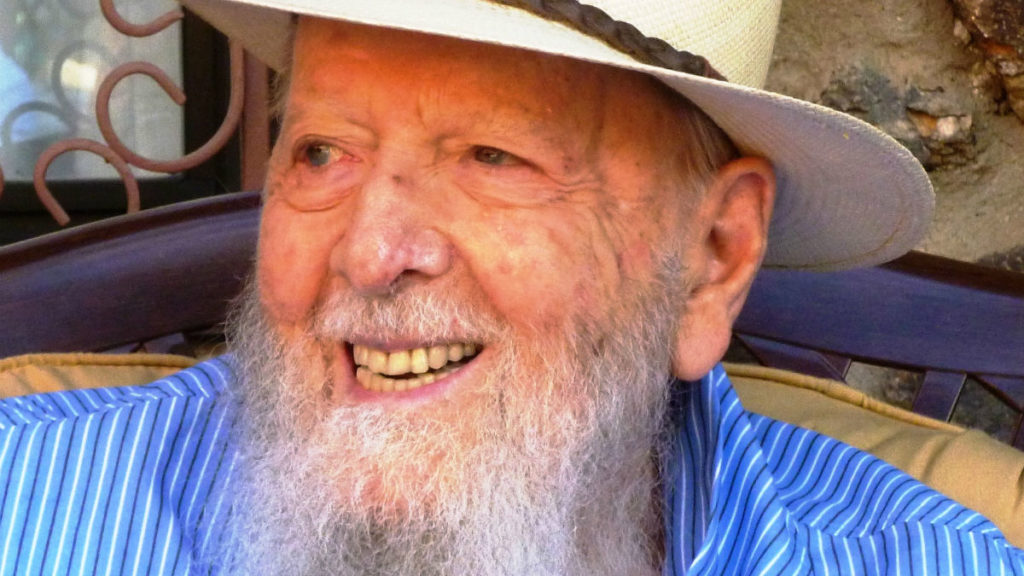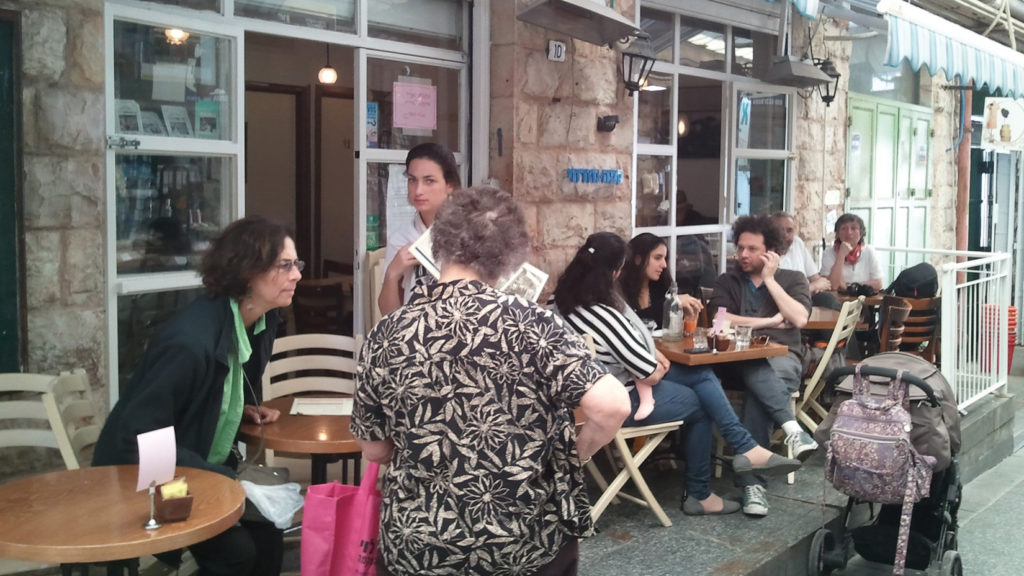Kabbalah in 18th-Century Prague: A Response and Rejoinder
Kabbalah in 18th-Century Prague: A Response
by Sharon Flatto
There must be something about the magical atmosphere of Prague that does not allow the myths and misconceptions it evokes, beginning with the non-existent Golem, to be laid to rest. Skewed scholarly portrayals of this center’s rich early modern rabbinic culture, and the neglect of the prominence of mysticism within it, provide the latest case in point. Instead of the empty dogmas and distortions preached by old guard historians, a new appreciation of the seminal role Kabbalah played in this milieu is long overdue.
Kabbalah was not the sole possession of isolated figures but rather the prevailing theological framework of many rabbinic leaders and lay individuals in 18th-century Eastern and Central Europe. Mystical doctrines shaped rabbinic authorities’ practices, and informed the teachings they shared with their congregants and students. Due to historical biases regarding Kabbalah during this period and to the lack of critical rabbinic biographies, studies of Prague’s towering Chief Rabbi, Ezekiel Landau (1713-1793), (including Aryeh Leib Gelman’s Ha-Noda` bi-Yehudah u-Mishnato, Jekuthiel Kamelhar’s Mofet hador, and Solomon Wind’s Rabbi Ezekiel Landau) as well as broader histories of 18th-century Jewry, accepted at face value Landau’s oft-repeated claim that he did not engage in esoteric matters. In my book, The Kabbalistic Culture of Eighteenth-Century Prague: Ezekiel Landau (the ‘Noda Biyehudah’) and his Contemporaries, I offer a necessary revision. Still, many of the past biases persist, as can be seen in Allan Nadler’s review of my book (Jewish Review of Books, Summer 2011).
The free use of kabbalistic tenets in the writings of Landau, which are mistakenly identified by Nadler as cosmetic or incidental, are, in fact, authentic expressions of deep mystical yearnings and accurate markers of the culture and beliefs of numerous Ashkenazic rabbis who took these concepts seriously. This understanding of 18th-century Jewish culture is apparently difficult for latter-day Maimonideans to accept, and poses a challenge to the next generation of scholars who are open to engaging with these texts on their own terms.
This is not the venue in which to elaborate upon the many flaws in Nadler’s problematic review. Nevertheless, I will briefly touch on several of his most glaring errors.
1) Failing to adhere to scholarly protocols. Much of Nadler’s review is based on an article by Maoz Kahana and Michael Silber in “the latest edition” of the journal Kabbalah, an article that challenges a central component of my book on the evidence of a lone sermon of Landau’s. Nadler, however, inexplicably failed to keep up with the scholarship. The actual latest edition of Kabbalah, published last February, included my extensive twenty-page response article in which I dismantle the Kahana/Silber argument piece by piece (see below). In his haste to shoot down a work that challenges prevailing opinions, Nadler crossed the line from dogmatism to scholarly malpractice.
2) Misreading and misquoting. Nadler makes serious errors in his readings both of the primary materials and my expositions of them. A particularly egregious example is his discussion of Landau’s responsum (Noda` bi-Yehudah, Tinyana, Yoreh De`ah, no. 164) on the mystical concept of gilgul neshamot (transmigration of souls), or simply gilgul. He completely misreads this responsum and misquotes my carefully crafted synopsis on pp. 124-125 of my book. Specifically, Nadler asserts that Landau “flatly dismisses” the notion of gilgul “as superstition” in this responsum. Where exactly? Any competent reader of rabbinic literature will immediately see that it is Nadler who has ‘misconstrued’ this responsum. Nadler then imputes to me the claim that Landau permitted the exhumation of an infant who died before his eighth day (in order to circumcise him) on the basis of gilgul. In fact, I clearly explain in my book that Landau believes that a possible gilgul is the reason why cherdat ha-din (the dead’s fear of judgment) may apply in this case, which would militate against circumcision. This consideration, however, is outweighed by the prospect of the dead baby’s future resurrection, which will engender shame if he remains uncircumcised. In sum, Landau’s responsum factors in gilgul, and never dismisses it. (Incidentally, his acceptance of the doctrine of gilgul here is in complete accord with the various other sources in his work where he refers to this mystical concept, which are examined in chapter 10 of my book.) If you are going to challenge a reading of a rabbinic responsum in print, you had better get it right!
3) Missing the centrality of Kabbalah for Landau. Nadler’s claim that Landau’s use of kabbalistic terms is simply part of rabbinic jargon misses the point and distorts the truth. For Landau does not just use kabbalistic terms. This highly influential halakhist (legalist) espouses central kabbalistic and mystical tenets, which shape his observance, his interpretation of biblical and rabbinic narratives, and his worldview. Landau’s approach to essential religious themes, such as the meaning of exile, the role of evil, redemption, converts, and the messianic age are largely shaped by Zoharic, Cordoverian, and Lurianic teachings. In fact, he declares that “the purpose of the entire Torah and its commandments” is to facilitate the kabbalistic goal of tikkun (cosmic restoration), and that nothing less than the structure of the universe, reward and punishment, and the nature of the next world are implicated in the mystical ideal of devekut (cleaving to God). Moreover, the kabbalistic goals of redeeming the shekhinah (literally God’s presence; the tenth divine emanation, or sefirah) and elevating the divine sparks are the prism through which he views the aim of religious activity. He repeatedly implores his community to observe the commandments, pray with tears, repent, and fast in order to achieve these goals. I discuss all these motifs at length in my book, but even a cursory glance at a number of his sermons (for instance, the second sermon in Ahavat Tzion, and the twentieth sermon in Derushei ha-Zelah) should suffice.
Landau’s other sermons and many of his glosses are similarly replete with, and informed by, kabbalistic teachings, despite his repeated protestations that he does not engage in these matters. What Nadler mocks as Straussian, namely my pointing to the tension between revealing and concealing Kabbalah in Landau’s work (a phenomenon found throughout the oeuvre and not “especially in his later writings,” as Nadler claims), is inherent to the esoteric enterprise. This dialectic is manifest in most works addressing Kabbalah, not just Landau’s. Since the centrality of Kabbalah in Landau’s writings (notwithstanding these tensions) is an inconvenient truth for Nadler, he entirely ignores most of my book (particularly Parts III & IV).
4) Leaning on shaky foundations. As mentioned above, Nadler hangs much of his argument on an article in the journal Kabbalah, co-authored by Maoz Kahana and Michael Silber. That article builds a far-reaching argument (that by 1770 Landau had undergone a dramatic shift regarding Kabbalah) upon one section of one sermon. Clearly, this is untenable when so many other contemporary sources tell a different story. Further, it is outrageous that Nadler, relying on his reading of Kahana and Silber, accuses me of paying insufficient attention to the dates of Landau’s writings—and hence the evolution of his thinking—when most of the materials are neither dated nor in chronological order.
Aside from the methodological problems of using one source to establish such a drastic shift, the source itself is problematic. It is a polemic against several mystical groups flourishing at the time, particularly the Sabbatians, Frankists, and newfangled Hasidim. (While the Hasidim were not, as Nadler notes, in Prague, they were spreading rapidly in nearby Eastern Europe.) As one of the leading rabbinic authorities contending with various threats to rabbinic culture by these mystical groups and others, Landau used harsh words against Kabbalah that must be understood in their political context. In addition, this sermon fragment is riddled with further problems, including questions of authenticity, censorship, provenance, and publication (all of which I address in my published response in Kabbalah). Moreover, in the rush to draw an exaggerated contrast between my work and that of Kahana and Silber, Nadler fails to mention that they too concede, largely based on my research, Landau’s favorable attitude towards and immersion in Kabbalah well into his adult life. Finally, there is much evidence in the writings of Landau and his disciples confirming his ongoing immersion in Kabbalah and support of its practices up until his death in 1793.
5) Further problems. Regarding Nadler’s other unfounded points and criticisms, I can only briefly mention a few below. Pace Nadler, Landau gave certain book haskamot (approbations) that unambiguously reflect his knowledge of the kabbalistic content of the books he approved. Nadler’s comments on the Brody kloyz (study house), particularly the issuing of the anti-Frankist ban, are also misleading. It was not the Brody kloyz who issued the ban but a regional rabbinic assembly in Brody. Intended to limit—but not stop—the study of Kabbalah, this ban reflects the rabbinic crisis triggered by its perceived misuse by the Sabbatians and Frankists, a phenomenon stressed in my book. Further, the kloyz’s position towards Kabbalah post-1756 did not change as simply as Nadler suggests. During the following decades, its members continued teaching, using, and supporting the publication of key kabbalistic texts, including the first printing of the classic Lurianic Etz Chaim. Finally, Nadler’s overlooking of my lengthy discussion of the history and culture of 18th-century Prague (i.e. the period of Joseph II, the Toleranzpatent, etc.) and the nature of Landau’s public career there reflects the narrowness of his perspective. It is precisely through my comprehensive study of Prague’s rabbinic and communal materials—in their historical context—that I was able to shed light on this heretofore-neglected prominent community and the deep mystical values at its core.
6) What is at stake. My book presents a fundamentally different perspective from that of Nadler’s own historical work on the mitnagedim (opponents of Hasidism). Building on the important studies of Mendel Piekarz, Moshe Rosman, and others, my book calls for a revision of scholarship’s understanding of the nature of late-18th-century non-Hasidic Ashkenazic Jewry, including many of the mitnagedim. It argues that Kabbalah and kabbalistic practices played a much larger role in these Jews’ day-to-day lives than Nadler and others have described. (We can quibble about the term mitnagedim. I, like other scholars, use it to denote Ashkenazic Jews with wide influence who opposed Hasidism publicly. Of course, this relational term is one that is often utilized only retroactively. In reality, most contemporary opponents of Hasidism viewed themselves simply as traditional Ashkenazic Jews.)
My book displays the indispensability of understanding Kabbalah—not just its terminology—for comprehending the 18th-century non-Hasidic traditional world, its theology, values, and even practices. This touches a nerve, to which Nadler responds with a reckless assault. Evidently, the issues animating the tensions between the Hasidim and mitnagedim are still present with us today.
To conclude, the field of early modern Jewish history must jettison the old rigid paradigm that defines spiritual figures either as creative Kabbalists or non-Kabbalists. A figure such as Landau, whose primary focus, to be sure, was Talmud and halakha but whose thought and mode of worship was shaped by Kabbalah points to a more nuanced reality. The existence of rabbinic leaders such as Landau also challenges the notion that it was only the Hasidim who disseminated Kabbalah to wider audiences. Landau, and others like him, inhabited a world that was much richer than the tired typologies of mitnaged-Hasid would suggest. A critical assessment of the multifaceted nature of early modern traditional society will only occur when scholars stop viewing its thick literature (in the Geertzian sense) solely through their rationalistic and talmudic lenses. The writings of numerous leading 18th-century rabbis, including the majority of Landau’s sermons and many of his glosses, show that Kabbalah was at the center of their beliefs and practices, and was not just window dressing. It is time to do these rich texts and this complex cultural world justice.
Kabbalah in 18th-Century Prague: A Rejoinder
by Allan Nadler
It comes as little surprise that Sharon Flatto was not pleased with my tough critique of her book, and she is certainly entitled to rise in its defense. What is however both surprising and disconcerting is the stridency, not to mention the ad hominem tone. While firmly criticizing what I viewed as Flatto’s many tendentious arguments that (his own protestations notwithstanding) Ezekiel Landau, the Chief Rabbi of Prague, was a fervent, lifelong kabbalist, who harbored a covert agenda to promote Kabbalah to the masses, I did not engage in any personal slurs.
Unfortunately, with the exception of her dispute with my reading of a single responsum found in Landau’s Noda Biyehudah, Flatto says nothing new here. As in her similarly redundant response to Maoz Kahana and Michael Silber’s elucidation of a hitherto censored and strongly anti-kabbalistic sermon in the journal Kabbalah, there is no novelty, and there are certainly no concessions to be found in her response. Nothing she has now written refutes my substantive and strictly scholarly criticisms of her book.
Flatto seems to be under the impression that repeating an argument—no matter how flawed—often enough, and with ever more strident insistence on its “truth,” will validate it. This is not a mode by which scholars ought to operate, and therefore I see no point in reproducing the content of my review in different words. However, her unfortunate personal assaults on my own academic integrity and scholarly competence do demand a riposte.
Here then is a partial list of Flatto’s depictions of me and my work:
I am a biased “old guard” historian who belongs in the company of dead 19th– and early 20th-century hagiographers of Landau who preach “empty dogmas and distortions.” In my critique of her work, I have failed “to adhere to scholarly protocols.” Worse, I have “crossed the line from dogmatism to scholarly malpractice” for having not addressed Flatto’s response to Kahana and Silber’s article in Kabbalah. (As so often happens in the world of academic publishing, my review was submitted to the Jewish Review of Books long before her response appeared; I did indeed read it before my review went to press, and although she now claims to have “dismantle[d] the Kahana/Silber argument, piece by piece,” I found her response painfully redundant, entirely unconvincing, and occasionally insulting—especially when she went so far as to question the authenticity of the text published by Kahana and Silber.)
I am also, somehow, a “latter-day Maimonidean” and, at the same time, an old-school mitnaged who “distorts the truth,” the “truth” being whatever Flatto insists upon. Finally, I am not a “competent reader of rabbinic literature.”
That final insult brings me to the sole point in Flatto’s incensed response that merits a detailed rejoinder: her insistence that I have been “misreading and misquoting” the responsum (whose blatantly incorrect reading she has now simply rehashed, while admonishing me for “not getting it right”) concerning the exhumation and circumcision of a child who died before the age of eight days. This very brief responsum addresses the question largely from the perspective of the doctrine of cherdat ha-din (the dead’s fear of judgment), which Landau concludes is not a factor, so long as the body has not decomposed to the point that its exhumation would constitute nivul ha-met (degradation of the dead). Having made his argument and permitted the exhumation based on balancing these two dialectical halakhic concerns, and having referred the questioner to legal precedents written by two famous opponents of the popularization of Kabbalah, Zvi Ashkenazi and Yair Chaim Bachrach (responsa that Flatto would have benefited from reading, but which would have made her misuse of Landau’s responsum even less tenable), Landau insists that his permission to exhume stands “even according to the kabbalists . . . who believe that there exists the transmigration of souls (akh le-fi da’at ha-mekubalim . . . she-yesh gilgul neshamot) and, if so, every [deceased] infant would also experience the fear of judgment for its [sinful] actions in a previous life,” because “nivul, which is the [critical] issue, would also apply to all infants, because, in my opinion, the living are also affected when they see that the end of all men is such a degradation (sof ha-adam le-nivul ka-zeh).”
Flatto strangely sees here an active promotion of the doctrine of gilgul, as she does in her reading of countless other texts, whose plain meaning notwithstanding, Flatto rallies to prove her book’s central thesis. My reading of this particular responsum is that Landau, referring dismissively to the kabbalists in the third person, and deflecting any relevance of the doctrine of gilgul to the halakhic question at hand, in fact reflects a degree of irritation with such kabbalistic interventions in matters of Jewish law. The final words of this uncharacteristically brief responsum betray somewhat less patience: “due to the great burden I shall be brief (u-lerov ha-tirdah akatser). ” It is, I would hope, understandable that in this dispute I empathize with Landau’s fatigue and will say no more, beyond inviting readers to purchase her book, read it carefully alongside both the primary sources and Maoz Kahana’s truly brilliant doctoral dissertation (as I have done, painstakingly, despite Flatto’s repeated, demeaning accusation that my review was based on Silber and Kahana’s single article in Kabbalah), and decide for themselves.
Suggested Reading

Revisiting Herman Wouk’s City Boy
Remembering Herman Wouk's "gentle mockery at the shopworn pretensions of bohemian poseurs and ethnic Jews passing as nonhyphenated Americans."

The Lamp of Zion
Over time, the menorah has morphed from a nostalgia-evoking relic of the past to a nation-inspiring symbol pointing forward.

Shaking Up Israel’s Kosher Certification System
On belly dancing, big government, and the issues of synagogue and state raised by recent attempts at kashrut reform in Israel.

Camp Mountain Lake, 1977
The picture-taking began when he was still a little kid, at Camp Mountain Lake in North Carolina. The owners of the camp remember a chubby kid, not very athletic, and the camera was a way of making friends.
Comments
You must log in to comment Log In